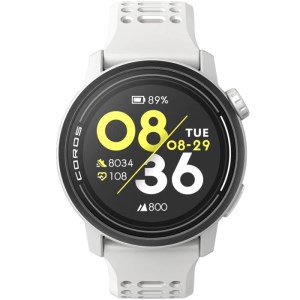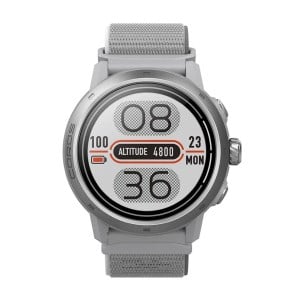How To Measure & Increase Training Load For Runners

As an athlete it’s critical to know that more training (on its own) isn’t always the answer to improving performance. It sounds controversial, but if you have tunnel-vision on training alone it’s likely you run the risk of overtraining – when your muscles are overworked and your mind has ‘hit a wall’, causing your performance to plateau.
Whether you’re training for your next triathlon or are racing to beat your personal best, it’s important to regularly check-in with your body and mind. By monitoring your training plan, you can make sure it’s catering to you and your fitness as your body adapts – being challenging but not to the point where you’re burning out.
We’ll discuss how you can measure your training load with a simple formula to guide the intensity and duration of your training on a weekly and monthly basis.
What Is Training Load & Why Is It Important?
For runners, training load refers to the ‘volume’ of your training including the intensity, duration and frequency of exercise during training and racing – whether on the treadmill, track, road or trail as well as any cross-training you integrate into your routine.
External Training Load vs Internal Training Load

Training load can be further broken down into your external load and internal load.
External load refers to the physical stress that is applied to your body – including distance, pace and other performance data for running, cycling and swimming. In terms of your gym training, the number of sets and reps, the weight of the free weights you’re working with like dumbbells and kettlebells and other external factors as you run/jump/lift all count towards the external load.
Internal load refers to your body’s response to these physical stresses or exertion such as your Heart Rate Variability, resting heart rate and your Sp02 (oxygen saturation of your blood). This is valuable information to develop a training plan that maximises your performance through a balance of training and its often neglected yet crucial partner recovery.
Investing in a sports watch to measure these internal load metrics is recommended for anyone that is serious about managing their training load accurately – however, you can gain an understanding of your internal load purely based on feel.
What Is Rate Of Perceived Exertion (RPE)?

The technical term for feel in this case is rate of perceived exertion or RPE. This is a method of self-reporting your own perception of how difficult you believe your workout is, and most athletes base it on how laboured their breathing is (as your body’s demand for oxygen increases during higher intensity activity) and the extent their heart rate has noticeably increased (the ‘pounding-in-chest’ feeling as your heart pumps oxygen-rich blood to fuel your active muscles).
Could you have a conversation effortlessly to a training buddy during or after your workout, or do you need a moment to ‘catch your breath’ after exercising under that external load? To keep track of this without a sports watch, you may give your workout a rating from 1 to 10, with ‘0’ being at rest and 10 being maximum effort/exertion.
Rate Of Perceived Exertion Scale
0: Rest
1: Very Light – Very low intensity activities that require virtually no effort or exertion. E.g., Sitting, talking and eating
2 – 3: Light – Low intensity activities that you can maintain for a long stretch of time without discomfort and that allow you to hold a conversation easily. E.g., Relaxed walking, shopping, stretching and light foam rolling
4 – 6: Moderate – Medium intensity activity that you can maintain for a long stretch of time with only mild discomfort. You may breathe more heavily but are still able to have a conversation without feeling out of breath. E.g., Brisk walking or jogging
7 – 8: Hard – Requires vigorous effort to maintain, leaving you short of breath but potentially still able to speak a sentence. E.g., Running at a fast and snappy pace
9: Very Hard - Activity you can only maintain in short bursts, causing you to have laboured breathing and leaving you only able to get a few words out until you catch your breath. E.g., Vigorous sprinting
10: Maximum Effort: Using every ounce of your strength to run as a fast as possible. Your able to maintain it for only a very short burst, leaving you fatigued and out of breath. E.g., Sprinting at max speed during the last stretch of a race with the finish line in sight
Acute Training Load vs Chronic Training Load
The other key terminology to recognise when it comes to your training load is chronic training load and acute training load, and it’s important to understand their relationship.
Your acute load refers to your training load over the duration of one week. Chronic load refers to the average of your training load accumulated over 4 weeks.
Managing your training load to build your long-term performance requires so much more than simply focusing on your workout in the moment. It’s crucial to avoid any dramatic spikes and ebbs to your training load across a period of time – as both can increase your risk of injury.
Diving straight back into your training at the duration and intensity of your last workout after a significant break puts your underworked muscles under a stress level they are no longer acclimatised to tolerate. For example, perhaps you’ve had an injury or are enjoying a week away, and as a result you’ve had to put a pause on your training, decreasing your acute training load for that week.
The temptation may be to ‘catch up’ by overtraining the next week – this is not advised and can be detrimental to your performance.
Gradual progression is key to increasing your training load safely and effectively without unexpected time on the sidelines due to injury, excessive fatigue or burn outs – whether mental or physical.
How To Manage Your Training Load For Improved Performance & Injury Prevention

10% Rule vs Acute:Chronic Workload Ratio
The 10% rule is the traditional method of increasing your training load. It’s pretty self-explanatory – the idea is you’re able to safely increase your training load from week to week by up to 10%. So, for a new runner that’s clocked up 5km in their first week of training, for the second week they could run up to 5.5km without unnecessarily increasing their injury risk.
This is a fairly simplistic approach which is A-OK for beginner runners, remembering to keep in mind it’s best to only increase duration or intensity at one time – not both.
However, imagine an athlete at an elite level increasing their training load 10% each week – they’d quickly ‘max out’ so to speak and this expectation would become unrealistic, let alone potentially dangerous.
This is where the acute:chronic workload ratio of recent studies comes into play. The goal is to make your training load measurable with a numerical value to help guide the volume of your workouts without increasing your injury risk.
What Is The Acute:Chronic Workload Ratio (ACWR)?
Instead of looking at training load week by week as per the 10% rule, the acute:chronic workload ratio looks at the bigger picture – putting the whole month of your training under the spotlight rather than isolating the results solely from one week to the next.
This means if you have a ‘slow’ week in the month due to other commitments, injury or illness – that’s also taken into account in determining the safest approach to get you back on track of your routine and in turn, work towards increasing your performance.
The basic formula to calculate your acute:chronic workload ratio is:
Acute Workload ÷ Chronic Workload = Acute:Chronic Workload Ratio
Studies have shown that a ratio of 0.8 – 1.3 is the sweet spot for athletes to increase their training load without putting themselves at a substantial risk of injury. The theory is that a ratio of more than 1.5 bumps up your injury risk dramatically. On the other hand, a workload under 0.8 may also hinder your progress by undertraining your muscles, causing them to ‘de-acclimatise’ so they no longer have the resilience to withstand the same levels of physical stress, and therefore may be more prone to injury.
You can also look at the acute:chronic workload ratio as a percentage. The sweet spot of 0.8 – 1.3 translates to a percentage of 80% - 130% of your chronic load (your average weekly training load over 4 weeks).
Keeping your training load within this range has been recommended to encourage consistent progression without setbacks. However, remember it’s natural to have ‘off’ training days or a 'bad run' now and then. Improving your performance isn’t always linear so don’t beat yourself up if you don’t reach every goal for every training session.
Of course, numbers on paper can’t tell you everything and are only a guide. It’s important to personalise any increases in training load to you, your training history and current circumstances.
Calculating The Acute:Chronic Workload Ratio Based On Mileage
For runners, we can use the acute:chronic workload ratio value to determine the rate at which it’s safe to increase mileage or whether you should wind down the distance a notch.
In terms of a runner getting back into a consistent training routine, we can look at their weekly mileage (acute workload) across a period of a month (chronic workload). For example:
Week 1: 4km
Week 2: 5km
Week 3: 5km
Week 4: 6km
Average mileage per week: 20km ÷ 4 weeks = 5km
To determine the acute:chronic workload ratio, we base our calculations on the mileage of the last week (Week 4) and divide that by the average of that month. The focus is on the last week as we’re comparing it to the volume of training accumulated across the 4 week period to ensure there are no significant spikes or ebbs.
Last Week Mileage (acute workload) ÷ Average Weekly Mileage (chronic workload) = Acute:Chronic Workload Ratio
6km ÷ 5km = 1.2 (or 120%)
When looking at our hypothetical runner, a score of 1.2 is a training load that in theory fits within a safe range, the sweet spot of 0.80 – 1.30. It means that the training load in the final week of the month was 120% of the monthly average.
Calculating Acute:Chronic Workload Ratio Based On Intensity
Remember the rate of perceived exertion (RPE) scoring system? This self-measurement of training intensity can also be applied to calculate your acute:chronic workload ratio.
You can calculate this by firstly multiplying the duration of your run or workout in minutes by the value you have given for perceived exertion (1-10).
Duration x RPE = Training Load Value
E.g., 40 minutes x 6 RPE = 240 workload
Rather than calculating acute: chronic workload for mileage, let’s look at it in terms of intensity across each week (acute load) for 4 weeks, and then a monthly average (chronic load). For example:
Week 1: 2 walks x 30 minutes x 3 RPE = 180 workload
Week 2: 2 jogs x 30 minutes x 6 RPE = 360 workload
Week 3: 3 runs x 20 minutes x 8 RPE = 480 workload
Week 4: 3 jogs x 40 minutes x 4 RPE = 480 workload
Total month training load: 1500
Average workload per week: 1500 monthly workload ÷ 4 weeks = 375 workload
Calculate Acute:Chronic Workload Ratio:
Last Week Workload (acute) ÷ Average Weekly Workload (chronic) = Acute:Chronic Workload Ratio
480 workload ÷ 375 workload = 1.28
Understanding The Results
You’re unlikely to do the same duration and intensity of training for all your training sessions across one week, we’ve just done that to simplify this hypothetical scenario. Of course, you should rate your RPE after each training session in the week for accurate results.
You can see from the hypothetical scenario above how different combinations of number of workouts per week, duration in minutes and intensity as a measurement of RPE can influence the total training load result for that week. For example:
- From Week 1 to Week 2 the quantity and duration of workouts were the same, but according to the RPE of Week 1 (3 – light/low intensity) this was at a walking pace – perhaps to get back into the routine of training.
- The Week 2 RPE (6 – moderate intensity) was significantly higher than Week 1, most likely due to setting a faster, jogging pace. This increased the training load from 180 in Week 1 to 360 in Week 2 – essentially doubling the prior week’s total.
- Week 3 was purely an interval session week, with shorter runs at a higher intensity.
- Even though Week 4 had the same workload of 480 as Week 3, it was achieved in a different way – with longer runs at a comparatively lower intensity.
These points give you an idea of how you can vary your running workouts, without necessarily changing the value of your training load.
When addressing the acute:chronic workload ratio, remember the sweet spot of 0.80 –1.30 you’re aiming for. With a result of 1.28, the training load of Week 4 is 128% compared to the month’s average, keeping in mind that the low intensity of Week 1 would have decreased the average considerably.
According to the theory behind the acute:chronic workload ratio, we’re still in safe parameters but it’s approaching borderline. Our hypothetical runner should be conscious not to push their training progression at a rate that would exceed this significantly based on their training load of previous weeks.
It’s recommended they check-in with their body to ensure they don't push through the pain or ignore the first signs of injury, if any. Being mindful about your body’s needs will help you avoid increasing training load too quickly too soon, and can help guide your recovery.
The Wrap Up

Hopefully this information has given you insight on your personal training load and methods to increase it safely as you jog, run and sprint towards your running goals. The results of the acute:chronic workload ratio are purely a guide and it’s important to recognise the science behind sport is continually evolving as new research becomes available. Remember every athlete is different and on a personal and unique fitness journey, so do what works for you.
It’s recommended that you work with your personal trainer to create a training plan that suits your individual requirements and running goals. This Couch To 5K running plan by running coach Shaun O'Callaghan for example, offers the foundations for new and returning runners to kick-start their running journey or get back into running safely after a break.
In terms of running, ideally a training plan will allow a consistent, steady and natural progression of improved speed and endurance and over time, you’ll be able to run faster or further with less effort (putting the score of your RPM in a lower range than your past-self for the same running workout).
Of course, a quality training plan goes beyond quantifiable factors like pace, distance and duration that influence your physical stress levels or internal training load. Your mental stress levels, rehabilitation and injury history, sleep quality, gut health, general wellbeing and workload beyond the road or gym – whether you’re chasing a promotion and/or chasing your little athlete around the playground – all contribute to your body’s response to training load.
The combination of all these factors will influence how you can get the most out of each training session. That includes knowing when to wind down and recovering effectively by keeping hydration, running nutrition, sleep quality and foam rolling in mind to improve your energy levels and support muscle health.
Happy running!
If you liked this, then you'll love:
A Runner's Guide To Hydration: The Sweat Rate Test



